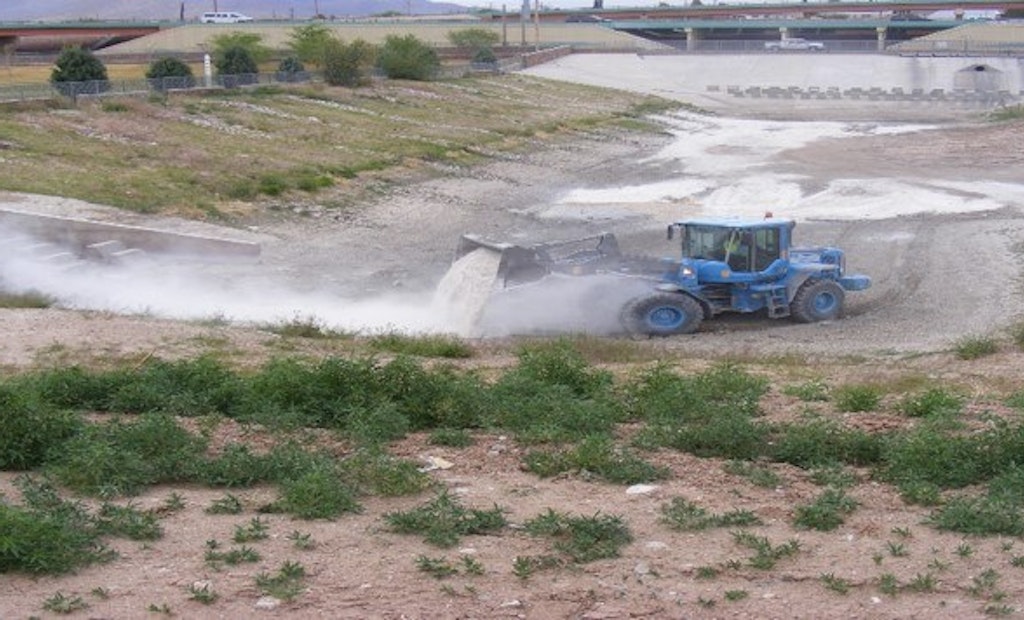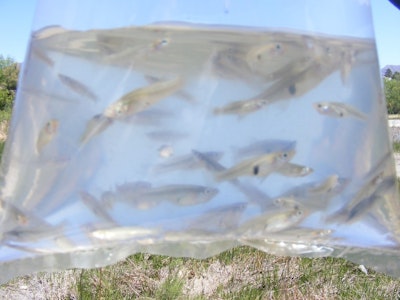
Interested in Stormwater?
Get Stormwater articles, news and videos right in your inbox! Sign up now.
Stormwater + Get AlertsMosquito control is nothing new to many cities, especially across the South, but the threat of the Zika virus is raising the attention level in many communities. In Texas, El Paso Water Utilities now finds itself on the front lines as the city expands its effort to control the mosquito population and associated diseases such as Zika and West Nile.
The department has just under 400 stormwater ponds and identified about 45 that may need attention at times to prevent standing water that provides a breeding ground for mosquitoes. Until recently, no Zika-infected mosquitoes had been found in the United States, but they had been found as close as Mexico, and the species that carries the virus does exist in the El Paso region.
“There is considerable concern along the whole southern tier of states that it could come here,” says Lisa Rosendorf, chief communications and government affairs officer who serves on El Paso’s Zika Task Force.
Those concerns have turned out to be well-founded. On Aug. 1, Florida officials confirmed that 14 people had been recently infected with Zika carried by local mosquitoes. Until recently, all the 1,700 cases of Zika in the U.S. were cases in which people were infected while traveling or through sexual contact with such a person. Of the 55 cases of Zika in Texas, all but one were contracted by people while traveling in other countries. The other was sexually transmitted.
Mosquitoes not a new issue
The city of El Paso has been involved in mosquito control for years because of the West Nile virus. There were 275 cases of it in Texas in 2015, including 16 deaths, according to the Texas Department of State Health Services. Nationwide, there are about 2,000 cases annually with around 100 deaths, according to the Centers for Disease Control and Prevention.
El Paso’s Department of Public Health has handled mosquito control in the past. With a staff of just nine involved in its vector control department, it has recruited the city’s water utility and Environmental Services to work jointly on both public education and mosquito control.
“We started looking at our sites and what we can do to be proactive in reducing the amount of mosquitoes,” says Martin Noriega, the water utility’s stormwater operations manager. He says they found two main issues — stormwater ponds that don’t drain as designed and those with higher water tables where standing water is natural.
As more agencies get involved, Noriega says it comes down to communication and coordination.
“Everybody is in the same boat and has an idea of what they can bring to the table,” he says. “You can tap into those resources and help out each other.”
Three-pronged approach
For those stormwater ponds not draining properly, recycled gypsum (sheet rock) has helped increase percolation. It has been used on a few stormwater ponds that had standing water and they were dry within a few weeks.
“It conditions the clay underneath the ponds and makes it more porous to let the water flow through better,” says Noriega. “Farmers used to do this a lot to make their land percolate better.”
In ponds that normally have standing water, Noriega planted mosquitofish that feed on the larvae of mosquitoes and other insects.
“About 10 ponds have mosquitofish,” he says. “Some ponds already had them naturally so we introduced more to reinforce them.”
A larvicide can also be used to prevent mosquito larvae from hatching and turning into adults. The last resort is pesticide fogging that kills the adult mosquitoes.
Ready to learn
Being the first year the water utility has been involved, Noriega considers it a way to gain experience in preparation for the monsoon season of mid-July through September.
“We’re monitoring the ponds and will see what happens,” he says. “As the rains come, we can do another assessment. When we went out to do the recon initially, some were already dry so we thought it was a good time to put down some gypsum. Others were real dry and we didn’t see a lot of vegetation so we’ll monitor them.”
While he expects it will be something the water utility will have to watch year-round, he doesn’t expect mosquito control to have much impact on the stormwater program’s workload or budget. As far as cost, it’s too early to tell, but he bought about 1,000 mosquitofish at less than a dollar per fish. The gypsum comes from a local gypsum recycling company and is very inexpensive.
Outreach
The water utility has become a bigger player in the public education aspect of the mosquito control program, along with other city departments.
“The message is that we’re taking important steps to control mosquitoes,” says Rosendorf. “But there’s a personal responsibility element in that everybody has to take action to check on standing water. It’s the pet dishes, the flower pots, tires and various things like that where these mosquitoes breed. They need to be emptied so that standing water doesn’t create that breeding ground.”
So far, she says the public interest has been mixed.
“Right now, I think people see it as a problem in other countries and they don’t necessarily see it as a problem in their own backyard,” she says. “But there are still a lot of questions about it so we’re trying to get in front of it so we can answer some of those questions.”







